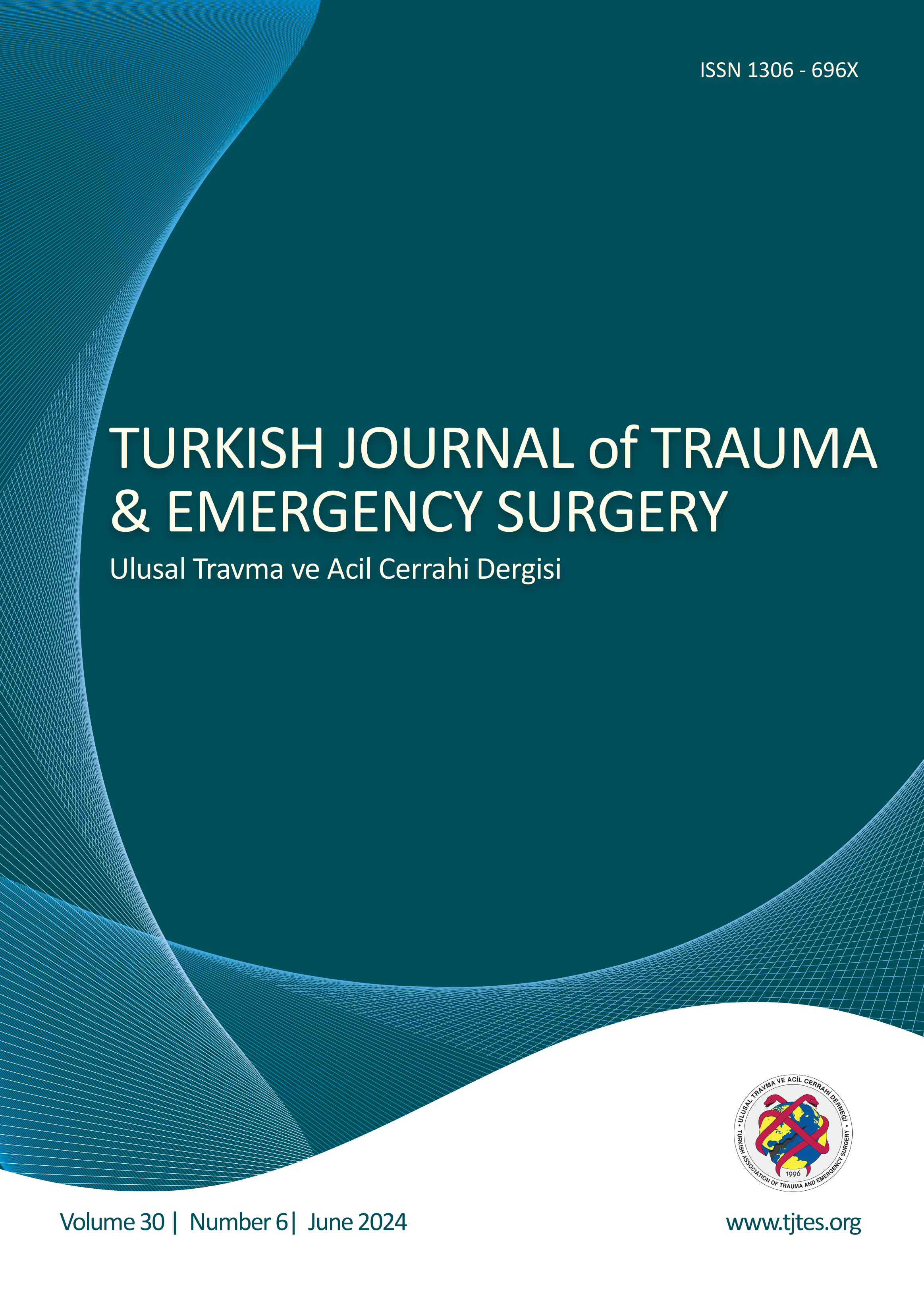Quick Search
Reliability of ankle clonus evaluation for monitoring neural-tract integrity in pediatric spinal deformity surgery under different anesthetics protocols
Nusret Ök1, Mehmet Yucens1, Seda Kıter2, Rıza Hakan Erbay3, Yetkin Söyüncü4, Ilker Kiraz5, Esat Kiter61Department of Orthopedics, Pamukkale University Medicine Faculty, Denizli-Türkiye2Department of Anesthesiology Denizli Government Hospital, Denizli-Türkiye
3Department of Anesthesiology, Pamukkale University, Denizli-Türkiye
4Department of Orthopedics, Akdeniz University Medicine Faculty, Antalya-Türkiye
5Department of Neurosurgery Pamukkale University Medicine Faculty, Denizli-Türkiye
6Department of Orthopedics, Odak Hospital, Denizli-Türkiye
BACKGROUND: Although the ankle clonus test is a pathological finding in neurological examination, it may temporarily occur in neurologically intact individuals during awakening from anesthesia. Some studies suggest it as a marker indicating neural tract integrity in pediatric spinal deformity surgery. This study aims to investigate the consistency of the ankle clonus test under different anesthesia protocols in pediatric patients with spinal deformities.
METHODS: A total of 39 patients diagnosed with Adolescent Idiopathic Scoliosis or Scheuermann Kyphosis were enrolled to this prospective study. Patients were divided into three groups based on the anesthesia protocol used. In Group I and Group II, two different anesthetic agents (pentothal vs. propofol) were administered, while Group III received Total Intravenous Anesthesia. All patients underwent surgery with pedicle screw constructs using a standard posterior approach. The presence of clonus was recorded during awakening.
RESULTS: Bilateral ankle clonus was observed in 10 patients (76.9%) in Group 1, six patients (46.1%) in Group II, and seven patients (53.8%) in Group III. Clonus was absent in 16 patients (41%) across all groups. There was no significant association between the presence of ankle clonus and factors such as group assignment, duration of surgery, level of instrumentation, or blood loss. No neurological deficits were observed in any patient during the postoperative period.
CONCLUSION: The ankle clonus test is not a reliable method for monitoring neurological deficits during spinal surgery. It is not exactly known how such myoclonic contractions occur or how the pathway is inhibited or activated.
Keywords: Ankle clonus test, pediatric spinal deformity; scoliosis; spinal deformity; wake-up test.
Pediatrik spinal deformite cerrahisinde, farklı anestezi protokollerinde ayak bileği klonus testinin nöral trakt bütünlüğünü izlemedeki güvenilirliği
Nusret Ök1, Mehmet Yucens1, Seda Kıter2, Rıza Hakan Erbay3, Yetkin Söyüncü4, Ilker Kiraz5, Esat Kiter61Pamukkale Üniversitesi Tıp Fakültesi, Ortopedi ve Travmatoloji Anabilim Dalı, Denizli, Türkiye2Denizli Devlet Hastanesi, Anesteziyoloji ve Reanimasyon Kliniği, Denizli, Türkiye
33Pamukkale Üniversitesi Tıp Fakültesi, Anesteziyoloji ve Reanimasyon Kliniği, Denizli, Türkiye
4Akdeniz Üniversitesi Tıp Fakültesi, Ortopedi ve Travmatoloji Anabilim Dalı, Antalya, Türkiye
5Pamukkale Üniversitesi Tıp Fakültesi Beyin Cerrahisi Anabilim Dalı, Denizli, Türkiye
6Özel Odak Hastanesi, Denizli, Türkiye
AMAÇ: Ayak bileği klonus testi, nörolojik muayenede patolojik bir bulgu olmasına rağmen, anestezi uyanışı sırasında nörolojik olarak sağlam kişilerde geçici olarak ortaya çıkabilir. Pediatrik spinal deformite cerrahisinde bu testin nöral traktın bütünlüğünü gösteren bir işaret olduğunu gösteren yayınlar bulunmaktadır. Bu çalışmanın amacı, pediatrik spinal deformite hastalarında farklı anestezi protokollerinde klonus testinin tutarlılığını araştırmaktır.
GEREÇ VE YÖNTEM: Adölesan idiopatik skolyoz veya Scheuermann kifoz tanısıyla ameliyat edilen toplam 39 hasta prospektif olarak çalışmaya alındı. Hastalar, anestezi protokolüne göre üç gruba ayrıldı. Grup I ve Grup II'de farklı anestezik ajanlar (pentotal ve propofol) kullanıldı, Grup III'te ise total intravenöz anestezi uygulandı. Tüm hastalar pediküler vidalama ile standart posterior yaklaşımla opere edildi. Hastanın anesteziden uyanması sırasında klonus varlığı kaydedildi.
BULGULAR: Grup I'de 10 (%76.9) hastada bilateral ayak bileği klonusu görüldü, Grup II'de 6 (%46.1) hastada, Grup III'te ise 7 (%53.8) hastada ayak bileği klonusu saptandı. Tüm gruplarda toplam 16 (%41) hastada klonus gözlenmedi. Cerrahi süre, enstrümantasyon düzeyi ve kan kaybı gibi değişkenlerle klonus arasında anlamlı bir ilişki bulunmadı. Postoperatif dönemde hiçbir hastada nörolojik defisit saptanmadı.
SONUÇ: Bu çalışma ayak bileği klonus testinin, omurga cerrahisi sırasında gelişebilecek nörolojik defisiti izlemek için istatistiksel olarak güvenilir bir yöntem olmadığını göstermiştir. Bu tür miyoklonik kontraksiyonların nasıl ortaya çıktığı veya yolaklarının nasıl inhibe veya aktive olduğu tam olarak bilinmemektedir.
Anahtar Kelimeler: Ayak bilek klonus testi, peditrik dedformite; skolyoz; spinal deformite; uyanma testi.
Manuscript Language: English




